UC Blogs
What to Do About Yellowjackets
The question begged for an answer. "It's yellowjacket time again. Does anyone have or recommend a good trap?" A Bay Area beekeeper today...
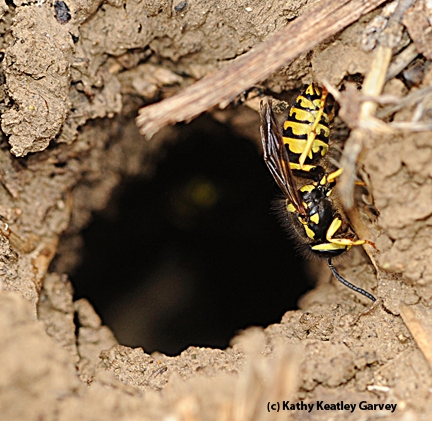
A yellowjacket entering its nest at an apiary. (Photo by Kathy Keatley Garvey)
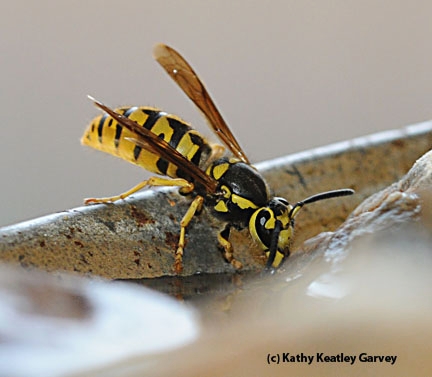
A yellowjacket sipping water at an apiary. (Photo by Kathy Keatley Garvey)
Seeds for Saving
This is the time of year I think about saving seeds, an important task in preserving the diversity of plants available to future generations and, on a more personal note, being able to grow favorite varieties which are hard to find and are well suited to my garden’s particular micro climate.
There are some things you need to know before saving seed. The most important is if the parent plant is a hybrid, an “open pollinated” or “heirloom” variety. A hybrid variety is a plant which is the result of crosspollination between two genetically different parent plants. Seed collected from hybrid plants does not result in plants resembling the parent plants and often is not even be as tasty as the parent plant. So, for the everyday gardener it is a waste of time to collect their seed as you never know exactly what it will produce. I look on the seed packets and plant labels for the word “hybrid” or “F1” next to the plant name so I know NOT to collect their seed.
On the other hand, “open pollinated” or “heirloom” varieties are plants whose seeds will produce plants similar to the parent plant but only if they are not allowed to cross pollinate (by bees and other insects) with another variety. Cross pollination can take place when two or more varieties are planted close together. So, if you are planning on saving seed it is important to plant the varieties, far apart from each other, in two different parts of the garden to keep them well separated. For example, if I plant a lemon cucumber and a green slicing cucumber close together, the seed collected from either plant will most likely not be true to the parent plant, but will produce a plant with a mixture of qualities from each parent and each seed will produce a different mix of qualities. The possibilities are endless.
Many of our edible plants are pollinated by bees or insects but there are always exceptions to the rule and they are tomatoes and beans. They are both self-pollinated and rarely if ever insect pollinated so if they are not a hybrid, their seeds will be true to the parent plant. I have read recently that peppers, eggplant, and peas are not likely to cross pollinate even though it is possible, so you can collect seed from them, even when they are planted close together. But always remember, with Mother Nature, nothing is for sure!
It is the cucurbit family (cucumbers, squash, pumpkins, and melons) you must keep separated by about 200 feet to avoid cross pollination. I don’t have that much room in my garden so, if I wanted to save cucurbit seeds I would have to grow only one variety and make sure my neighbors garden is more than 200 feet from mine.
The next installment will contain more information of saving seed.
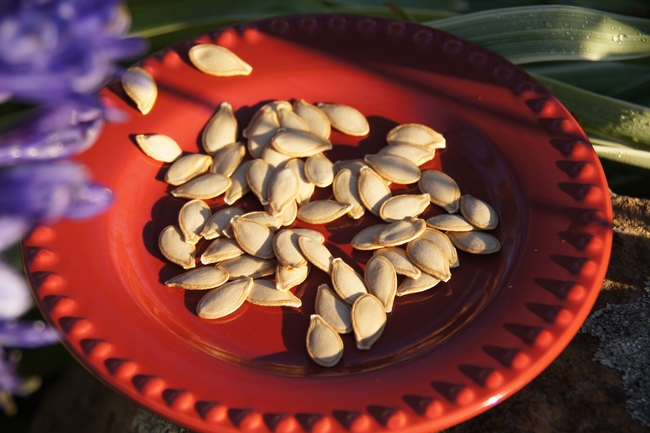
Pumpkin seed. (photo by Libbey McKendry)
Good Things Come in Twos, Too!
There's an old saying that "good things come in threes." Well, they also come in twos. When insect photographers manage to get two insects in the...
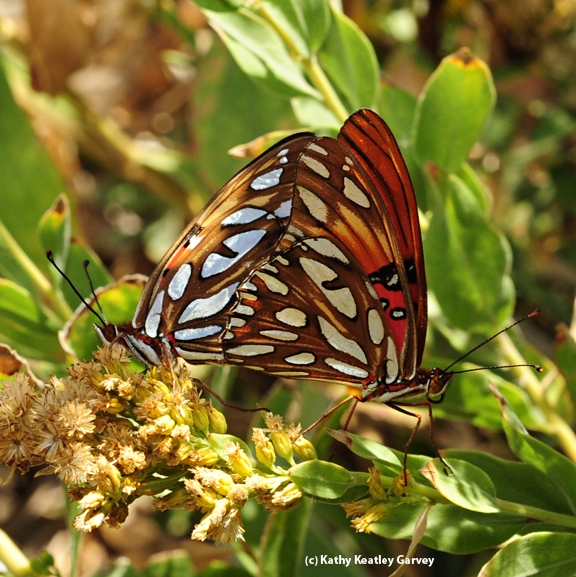
A pair of mating Gulf Fritillary butterflies on a passionflower vine. (Photo by Kathy Keatley Garvey)
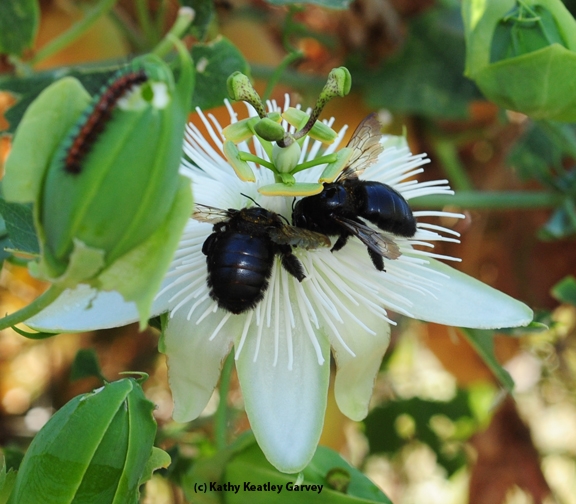
Two female Valley carpenter bees sharing a passion flower. Note the Gulf Fritillary caterpillar.(Photo by Kathy Keatley Garvey)
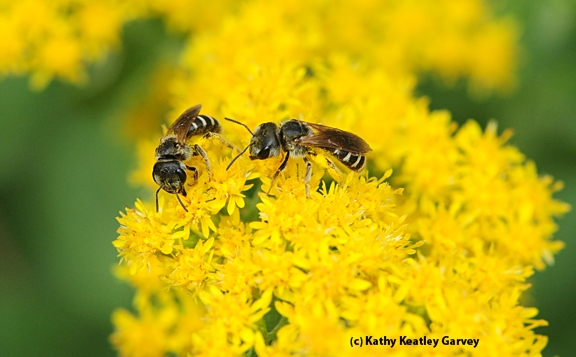
Two female sweat bees, Halictus ligatus, on a goldenrod. (Photo by Kathy Keatley Garvey)
Does Hydroponic Forage Production Make Sense?
There are some things that are attractive at first look, but fall apart upon analysis. Maybe like that fancy car you bought which needed major...
All About Pollination
Pollination--what should we know? How can we attract pollinators to our gardens and agricultural landscapes? Rachael Long, Yolo County farm advisor...
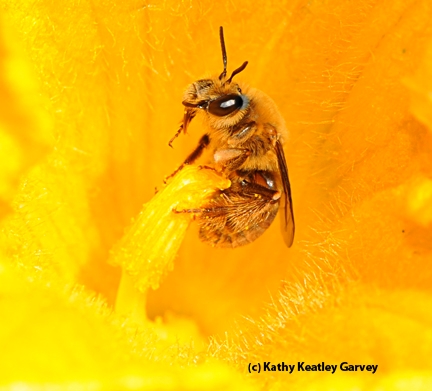
Squash bee, Peponapis pruinosa. (Photo by Kathy Keatley Garvey)
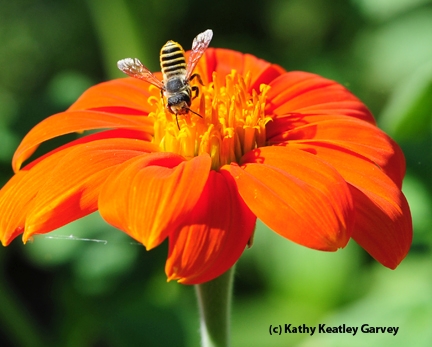
Leafcutting bee, Megachile fidelis, on Mexican sunflower, Tithonia. (Photo by Kathy Keatley Garvey)
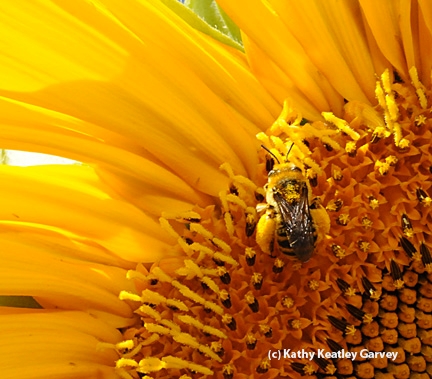
Sunflower bee, Svastra obliqua expurgata. (Photo by Kathy Keatley Garvey)

